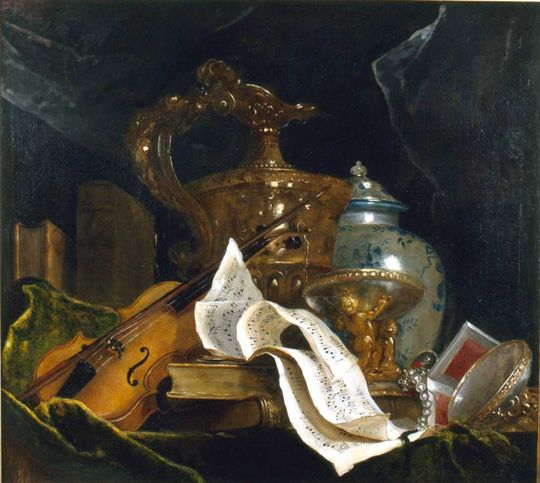Still Life or Allegory of Music
circa 1695-1700

Oil on canvas
873-1-169
Bequeathed by Jean-Marie de Silguy in 1864
H. 79 cm - L. 87,3 cm
This painting had a companion work which was an allegory of painting. It was damaged on the left (the table continues and a landscape is revealed behind a drape). All the ingredients of a Nordic vanitas are present, books synonymous with reason, the violin and the partition are symbols of the senses, the silverware, porcelain, mother of pearl goblet, necklace and casket are expressions of luxury. But above all, the painter is sensitive to the varied effects of a purely visual language and a decorative bias.
The Partition corresponds to the beginning of the prologue of the tragedy Phaëton, set to music by Jean-Baptiste Lully, created in Versailles in 1683.
Still Life or Allegory of Music
circa 1695-1700

Oil on canvas
873-1-169
Bequeathed by Jean-Marie de Silguy in 1864
H. 79 cm - L. 87,3 cm
This painting had a companion work which was an allegory of painting. It was damaged on the left (the table continues and a landscape is revealed behind a drape). All the ingredients of a Nordic vanitas are present, books synonymous with reason, the violin and the partition are symbols of the senses, the silverware, porcelain, mother of pearl goblet, necklace and casket are expressions of luxury. But above all, the painter is sensitive to the varied effects of a purely visual language and a decorative bias.
The Partition corresponds to the beginning of the prologue of the tragedy Phaëton, set to music by Jean-Baptiste Lully, created in Versailles in 1683.
